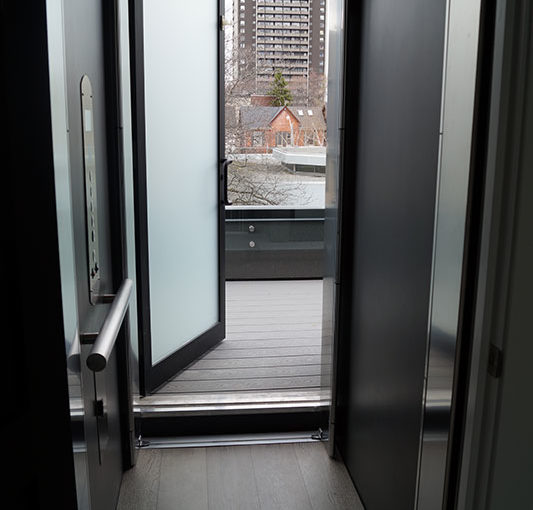
Home Elevator Installation: A Step-by-Step Guide
You may think home elevator installation is a laborious and complicated affair, but with the right guidance, it can be a relatively straightforward process. Home elevators can provide independence and safety for those unable to use stairs – and they can even act as a luxury feature for properties with multiple levels, boosting a home’s value and convenience for visitors. If installing your own home elevator sounds like your cup of tea, then look no further than this step-by-step guide for a stress-free process. From digging a hole to having the elevator inspected, you’ll be a pro in no time!
What is the Home Elevator Installation Process?
The home elevator installation process is an involved procedure which begs to be approached with sound planning and preparation. It can involve multiple contractors, anywhere from two to four or more, depending on the depth of the job and other unforeseen circumstances. The process requires detailed mapping of the target space and any issues related to access, area limitations, building codes, and other considerations. Onsite installation—being the most complex step—requires the cutting out of large openings for the lift motor and shaft ways, as well as the installation of structural supports.
In certain cases, especially when dealing with difficult tasks such as retrofitting an existing structure, it is best to have a professional elevating device contractor handle the work—not just onsite—but also during every other step in the process (from custom design to upkeep). Alternatively, if you are familiar with relevant regulations governing private home elevators and have some experience working with construction plans and lifting instruments, then you may choose to self-manage whatever aspects you are comfortable tackling.
Planning for the Elevator Installation
Planning for the home elevator installation is a crucial step in the installation process. Prior to any physical work, each of the involved parties should have a clear understanding of the project, including specifications related to size, weight capacity, and service calls. If the project includes custom-made parts or complex programming, it is important that escalator technicians communicate with elevator suppliers well before installation starts. It is also important to ensure that all necessary tools and equipment are on-site before beginning the work.
Additionally, it is important to find out if local building codes exist that could affect the planning and/or installation process. Some jurisdictions may require additional affidavits or permits for elevators located in certain spots. Further, some certified technicians may need to sign off on specific inspections or paperwork before an elevator can be started up and used.
It can be helpful to find out how much time it will take to install an elevator before committing to a timeline. Very limited mobility spaces may require extra coordination of products and services making timeframe estimates difficult without detailed knowledge about the specific requirements for the job at hand.
Ultimately, proper planning for a home elevator installation requires careful consideration of space requirements, safety features, technical support options, building code compliance, and estimated completion times. With adequate thought put into these components in advance of beginning any physical work, contractor and homeowner alike can both feel confident that the job can be completed on time and within budget.
Having discussed these considerations related to elevator planning, it is necessary to move on to preparing the structure for installation – a task that could involve selecting placement locations as well as gathering information about shaft requirements and structural changes.
Preparing the Structure for Installation
Now that the planning process of home elevator installation is completed, it is time to start preparing the structure for installation. Before the elevator itself arrives, an engineer should inspect the building’s existing structure and determine if it is suitable for supporting the elevator. If not, modifications may be necessary to add structural support to the wall or ceiling where the elevator will be installed.
Another component of preparation is clearing out space for the elevator shaft and hoistway. Hoarders and busy-bodies will need more coordination than those with organized storage spaces, but either way it is important to make sure the area is clean and empty before starting any part of the installation process.
Finally, wiring must be run from the basement up to the top floor of the home or as far as needed based on what type of elevator has been decided upon. Electrical components like power units, subpanels and emergency lighting must also be set up alongside circuit breakers. Depending on your local city regulations, permit applications may need to be filled out prior to installation so keep an eye out for that step as well.
Electrical Installation for Home Elevators
Once the structure has been fully prepared for the home elevator installation, the next step is to install the electrical components. Electrical installation will be a crucial component for providing power to both operate and maintain an elevator in a safe manner.
The electrical wiring for an elevator needs to comply with all applicable codes and regulations, as improper wiring can lead to safety hazards such as electric shock or fire. It is highly recommended that professional electricians are hired who have experience in working on elevators. This will ensure that the wiring is done correctly and safely and help avoid any costly mistakes that may arise from non-compliance with specific codes or regulations.
The specific wiring requirements for an elevator will depend on how it is powered, but they all provide the same basic functions. These include lighting controls, call buttons, safeguards such as emergency stop buttons and control circuitry designed to monitor proper operation of the elevator’s different systems.
In conclusion, electrical installation for home elevators is vital to power and maintain them in a safe way. Before commencing work on any electrical components, make sure you enlist the assistance of a qualified and experienced electrician who can guide you through what needs to be done to meet all applicable safety codes and regulations.
Safety Requirements for Home Elevators
The installation of a home elevator is regulated by the American Society of Mechanical Engineers (ASME) and its codes. A qualified installer will be familiar with such regulations as ASME A17.1, which is an elevator code that includes provisions for safety requirements of freight and passenger home elevators. Depending on state and local building codes, it may be necessary to obtain an elevator permit prior to installation.
When it comes to safety requirements for home elevator installation, there are two main areas to consider: mechanical safety and structural safety. Mechanical safety measures include such components as automatic switches that detect when the car exceeds a certain speed, emergency braking systems that can stop the car abruptly in case of malfunction or if anything is blocking its path, alarms or chimes that can alert riders and those inside the house to any malfunctions, and other mechanisms like fire-resistant cables and eye scanners designed to keep out unauthorized personnel. Structural safety measures are typically addressed in the state or local building codes; however, some basic steps can be taken such as making sure the hoistway is structurally sound before installation, ensuring the car remains level during operation, installing guides for the car at each landing so it stays on track with no slippage or swaying, setting limits on travel speed and acceleration force, and more.
Ultimately, while there is a continuing debate about how stringent home elevator safety requirements should be, both sides agree on one thing: everyone should prioritize their own safety first when it comes to using a home elevator installers need to ensure that all required codes and regulations are met before home elevator installation. Routine maintenance should also be performed by certified technicians to make sure any problems are detected early on before they potentially lead to injury or worse. By following these steps along with understanding your local building codes’ safety requirements beforehand, you’ll be well on your way towards having an enjoyable experience while using your home elevator.


